As you eagerly await the arrival of your little one, you may be wondering how to best prepare for their nourishment and well-being. One proactive step that many expectant mothers are embracing is colostrum harvesting, a gentle practice of collecting the first milk your body produces before your baby is born. This "liquid gold," as it's often called, is packed with essential nutrients and antibodies, offering a powerful boost to your newborn's health and immunity. Let's delve deeper into the world of colostrum harvesting and discover how you can embark on this empowering journey.
What is Colostrum?
Colostrum, often referred to as "liquid gold," is the first milk produced by your breasts during late pregnancy and the early days after childbirth. This thick, yellowish fluid, unlike mature breast milk, is low in volume but incredibly rich in antibodies, immune factors, and essential nutrients. It acts as your baby's first immunisation, providing a vital protective shield against infections and promoting the development of a healthy gut microbiome. Colostrum is truly nature's perfect first food, perfectly tailored to meet the unique needs of your newborn in those precious early days.
Why Consider Colostrum Harvesting?
Colostrum harvesting offers a wonderful way to ensure that your baby receives this invaluable first milk, even if breastfeeding challenges arise after birth. By collecting and storing colostrum before your baby arrives, you're creating a safety net of nourishment and protection. Some of the potential benefits of colostrum harvesting include:
- Providing supplemental nourishment for newborns with low blood sugar or difficulty latching, ensuring they receive the vital nutrients they need during those critical first hours.
- Boosting a premature baby's immune system and reducing the risk of infection, offering a precious layer of protection for their delicate systems.
- Offering reassurance and peace of mind to expectant mothers, knowing they have a readily available source of nourishment for their baby, regardless of any unforeseen challenges.
It's recommended to start antenatal expressing (another term for colostrum harvesting) around 37 weeks of pregnancy, as colostrum production naturally increases at this stage. However, it's crucial to consult with your healthcare provider before beginning, especially if there are any concerns or risk factors, such as a history of preterm labour, as nipple stimulation can potentially induce labour.
How to Harvest Colostrum?
Colostrum harvesting is a gentle and safe process that you can easily do in the comfort of your own home. Many mothers find that practising hand expression in the relaxing environment of a warm bath or shower helps to encourage milk flow and familiarise themselves with the technique, as colostrum is typically produced in small quantities that a pump may not effectively collect.
Before you begin, it's essential to prioritise hygiene. Wash your hands thoroughly and ensure all collection containers and utensils are clean and sterile. This helps protect the precious colostrum from contamination.
Here's a step-by-step guide to harvesting colostrum:
- Gather Supplies: Have a clean, sterile container like a syringe or small collection cup ready.
- Warm Up: Apply a warm compress to your breasts or take a warm shower to help stimulate milk flow and promote relaxation. The warmth can help encourage the let-down reflex, making it easier for the colostrum to flow.
- Massage Gently: Use a C-shape hold and gently massage your breast from the chest wall towards the nipple. This gentle massage helps to stimulate the milk ducts and encourage the release of colostrum.
- Express Colostrum: Gently hand express, using a rhythmic motion to encourage colostrum to flow. Be patient and gentle with yourself; it may take some time and practice to get the hang of it.
- Collect and Store: Carefully collect the colostrum in your container. You can combine colostrum collected throughout the day in the same container, ensuring it's kept refrigerated between expressions.
How to Store Colostrum
Proper storage of your harvested colostrum is crucial to preserve its valuable nutrients and ensure its safety for your baby. Here are some guidelines to follow:
- Refrigeration: During the collection process, you can store your colostrum in the same syringe or container throughout the day. However, it's important to refrigerate it between expressions. Place the container towards the back of the refrigerator, where the temperature remains most consistent.
- Freezing: Once you've collected a sufficient amount of colostrum, you can transfer it to freezer-safe containers or bags. It's recommended to freeze it in small, labelled portions (1-2 millilitres) to avoid waste and thaw only what you need at a time. Remember to label each container with the date of collection for easy reference.
- Consult with a Healthcare Professional: Before embarking on colostrum harvesting, it's important to discuss the process with your doctor, midwife, or breastfeeding consultant. They can provide personalised guidance based on your individual situation and ensure that colostrum harvesting is safe and appropriate for you.
By following these simple storage guidelines, you can confidently preserve the precious colostrum you've collected, ensuring it remains a valuable source of nourishment and protection for your baby when they arrive.
A Gift of Love and Protection

Colostrum is truly nature's gift to newborns, offering a wealth of benefits that support their health and well-being from the very beginning. Colostrum harvesting is a simple yet empowering act of love, ensuring your baby receives this invaluable first milk, even if challenges arise.
At Hegen Lactation Centre, we're here to support you on your journey into breastfeeding and motherhood, offering guidance and resources to help you navigate colostrum harvesting, newborn milk intake or any other questions you may have. Remember, you're not alone, and with the right support, you can embrace this beautiful chapter with confidence and joy.

